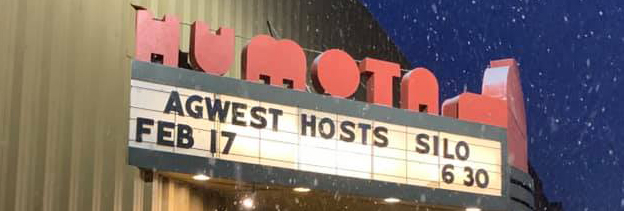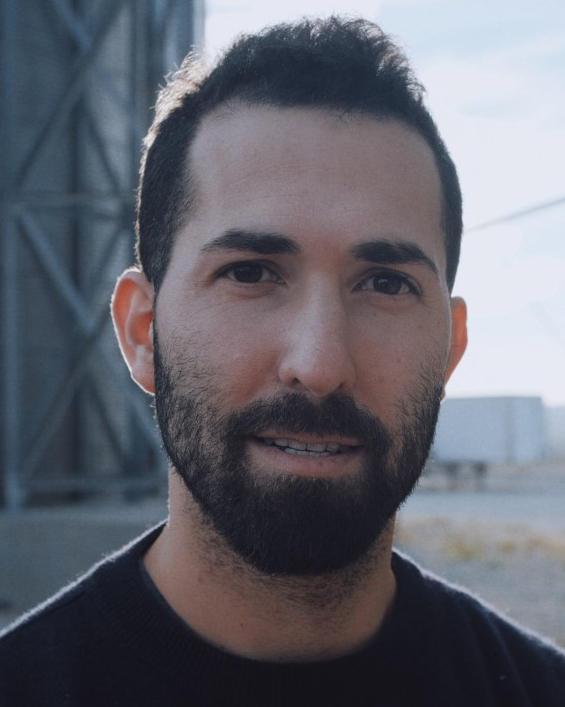I’m writing from Pennsylvania, where I’ve suddenly moved with my wife and daughter during the COVID-19 crisis. We’re here to learn how to farm and to enjoy wide open spaces. You see, I grew up in New York City and lived on the Upper West Side of Manhattan for nearly my entire life, but I find myself fleeing what I once called home for the rural landscape and lifestyle that, over the past four years, has captured my heart and imagination.
This change started for me in May 2016, my first time in the Midwest. In Rising Sun, Indiana, a young farmer explained to me that “growing up, the coolest thing to do was work on the farm, but now it’s just fewer people, bigger machines.” I was there because I was working on SILO: Edge of the Real World, a short documentary film that followed the days and lives of Adam Fox, the aforementioned young farmer, and Clay Althoff, a senior in high school. After a grain entrapment shocked their small community, both men considered the risks and rewards of a farmer’s life. During that film’s one-week production, I became witness to a world I rarely thought about, and I realized that the stories I wanted to tell as a film producer were those of American agriculture and, more importantly, the people who lived its values and traditions.
Before I met and spent time with Adam Fox, I had no particular image of the American farmer. Most of what I knew about agriculture came from headlines and well-intentioned but often uninformed conversations about rural America’s impact on our environment. Pick-up trucks and pesticides were my main associations.
It only took a couple of conversations with Adam for my preconceived notions to evaporate. Adam and his family were generous, hospitable, courteous, and forthcoming. They spoke with humility about their successes and with honesty concerning their fears. When we asked if we could pay them a fee for their time and for filming on their farm, they refused it. Anything we needed, they provided, asking nothing in return. They were by far the kindest people I’d ever encountered. And they care deeply about their land…after all, it’s been in their family for over 200 years.
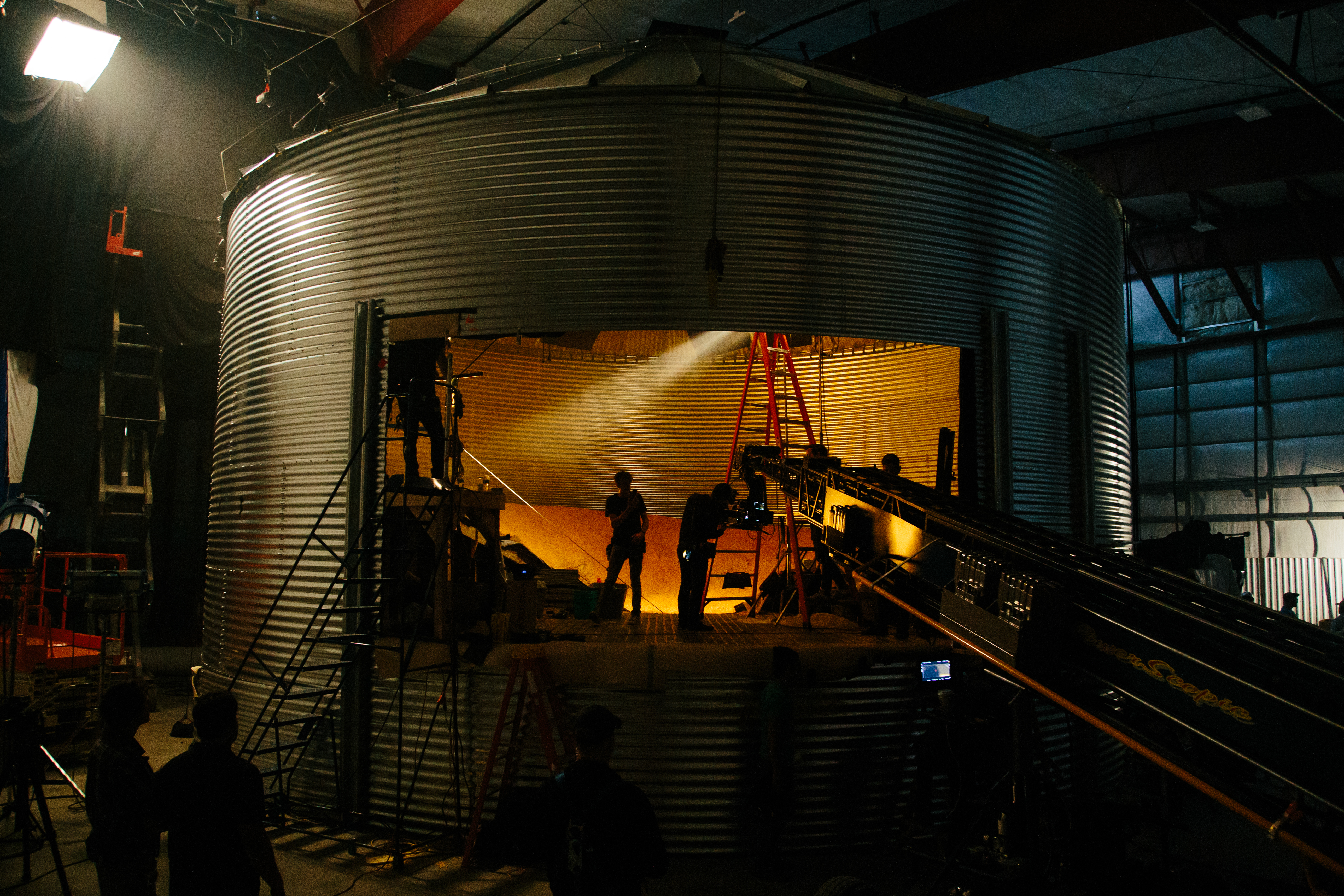
Filming inside one of the ‘silo’ sets built free of charge for the movie by Sukup Manufacturing Co.
Growing up, I dreamt of attending the Sundance Film Festival and the Academy Awards with critically acclaimed films. When SILO: Edge of the Real World premiered at the TriBeca Film Festival in 2017, I got a taste of that childhood dream. However, instead of pursuing more guaranteed red carpet stories, after the success of the documentary, I longed to return to the Midwest and the stories I knew were there: farm stories. Entire family legacies were wrapped up in Adam and Clay’s experiences. Moreover, I began to realize that film producers and farmers were more alike than different. In both industries, there are few guarantees, and faith is a necessary ingredient for staying safe and sane.
SILO: Edge of the Real World was one of the true stories that inspired the narrative of SILO, a scripted feature film that our creative team developed, which depicted a grain entrapment rescue operation. Like the documentary that preceded it, SILO follows an 18-year-old boy in a small American farm town. He gets trapped in a grain bin, and the local volunteer firefighters must rescue him before he drowns in corn.
Drowns in corn. The first time I heard those words in 2016, it punched me in the gut. What a metaphor: farmers drowning in the grain they harvest in order to feed a growing global demand for food and fuel. At S I L O’s center is a visceral, horrendous accident in the most dangerous industry in our country. My compul-sion to produce this ambitious feature film grew with each new relationship formed that centered on farm safety; whether with local volunteer fire chiefs or family members who had lost loved ones to an accident. Making a scripted, entertaining feature film was my original goal. But what I really wanted to show Americans in rural and urban landscapes was what I had recently learned, and what eventually became our film’s tagline: feeding the world comes at a cost.
Our planet’s population depends upon farming, but only a tiny fraction of the people I know outside of agriculture really understand the human cost of putting food on the table. They don’t know that the average farmer is 58 years old (10 years above the national average), or that farmers’ livelihoods are dictated by weather, politics, and fluctuating, unpredictable financial markets. Most consumers are unaware of the pressures on a grain, ranch, or dairy operation. They don’t know about corn lung and tractor rollovers, the stresses of dropping commodity prices and intergenerational farming, and they certainly don’t know about grain entrapments, accidents that happen over 30 times annually in America (more than half of them ending in death).
Our film team’s knowledge of these realities inspired our small company of artists to take our 10-minute documentary and evolve it into SILO, the feature. Production dates were set for summer 2018 on Affinity Farms in New Haven, Kentucky. There, the values of intergenerational farming and the teamwork of a film crew went hand-in-hand. The Pottinger family—the 11th generation to live on that very land—opened their doors to us right before a busy harvest season. The Kentucky Department of Agriculture and the Grain Handling Safety Coalition (a farm safety non-profit) served as consultants, making sure our script and scenes were true-to-life and consistent with safety protocols. We formed alliances within the agricultural industry that contributed greatly to our success. Our most daring partnership came when we desperately needed assistance building sets for our grain entrapment scenes. Along came Sukup Manufacturing Co.—the largest family—owned grain bin and dryer company in the world—which stepped in and built them for us, for free.
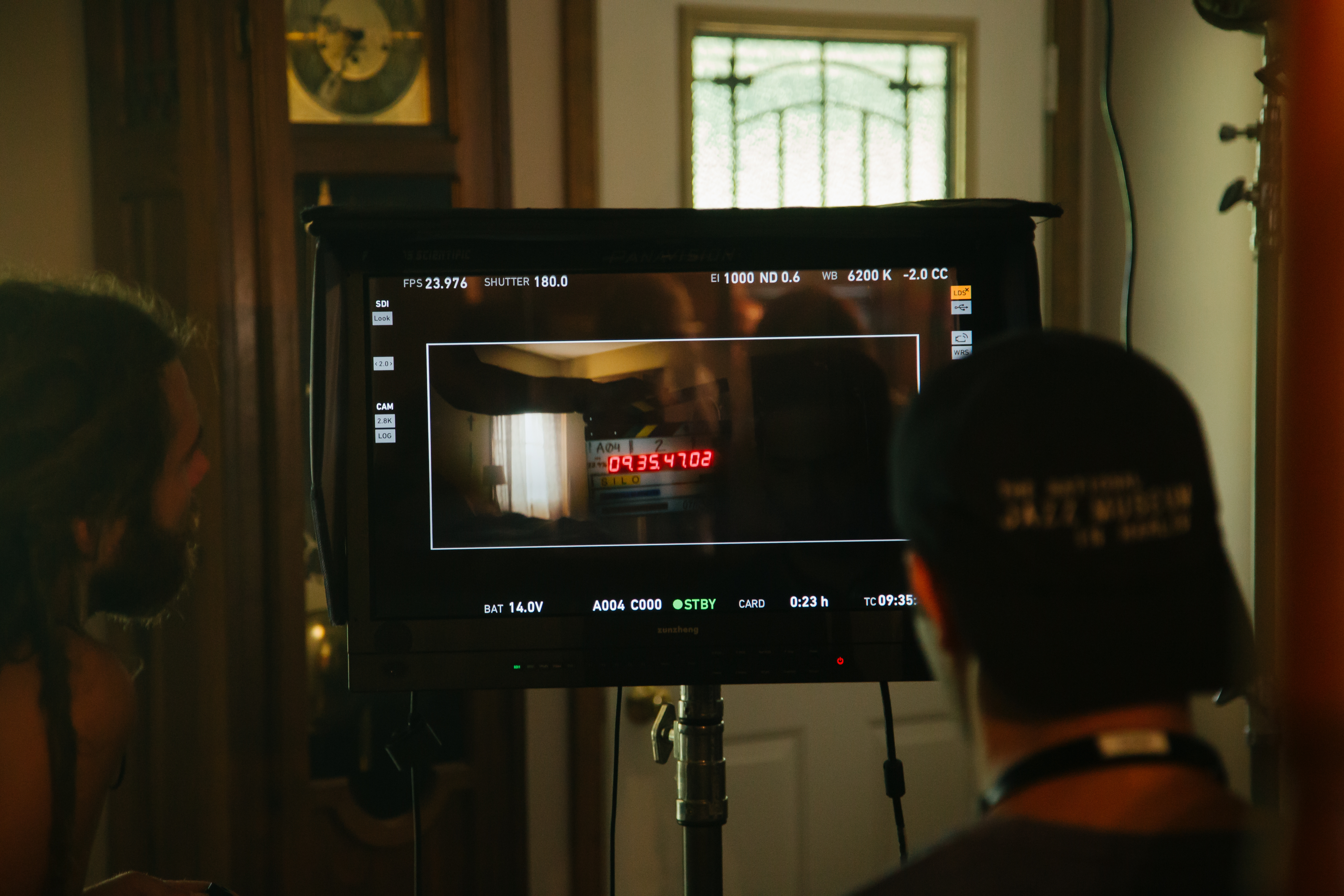
Shooting on the film took place during the summer of 2018
Throughout this journey, I was and continue to be humbled by the generosity of those in agriculture. What we often lack in big cities, rural America has in spades. When scouting locations in Kentucky, we knocked on farmer Ryan Bivens’ door. He drove us around for an hour and gave us a master class in modern-day agriculture before casually mentioning that his “winter wheat had frozen over” that morning; $500,000 worth of his core winter commodity down the drain. But just like Adam Fox a state over in Indiana, Bivens was a class act, devoted to helping others, often at the expense of his own more-immediate needs. That’s the farmer’s way.
Despite some hiccups typical of independent film production, we finished post-production in summer 2019, having created a film that we were incredibly proud of. We carried the communal spirit that had served us so well into SILO’s premiere at the largest outdoor farm equipment show in the world: the Farm Progress Show in Decatur, Illinois.
Our premiere was unlike anything either the film or agricultural industries had ever seen. Our team flew in from New York and Los Angeles and traded suits and dresses for jeans and flannels; the red carpet for the hay carpet (yep, it was pretty cool). SILO, with popcorn and drinks donated by local sponsors, was shown directly to audiences most affected by the stresses of agriculture. For the first time in a long time, high-quality, independent film was brought directly to them.

A SILO showing in Humboldt, Iowa on a snowy winter night
Along with the screenings, a variety of farm safety organizations joined the events to conduct thoughtful panel discussions thereafter. Those who helped support the film behind the scenes proudly stood front and center to help spread its safety message. We learned that SILO, while directly about grain entrapment, was also a way to get audiences to engage in conversations about an oft-taboo subject in rural America: mental health.
What we didn’t realize when we were making SILO was that the film brought to light intense realities regarding the stresses of modern-day farming. I was astounded not just by the number of audience members who came up afterward to tell us they knew of someone who had been caught in a grain bin, but also those who raised their hands to share their stories about the pressures of keeping the farm financially afloat, of having to care for an older relative with dementia, or debilitating farm-related injuries, and of course, about the epidemic of opioid addiction and suicide that has such a particular stranglehold on rural America.
Nonetheless, the spirit of rural America, and the soul of SILO, is community. Following our unprecedented film premiere came a one-of-a-kind film distribution plan. Throughout the process of developing, producing and editing the film I had genuinely sought the assistance of the film industry. To my dismay, SILO was rejected by over 50 different companies that fund, produce or distribute independent films. The most common reason given was that no one knew how to cater to “that market,” aka rural America. Unfortunately, the traditional coast-based film companies had scant interest in a story about farmers. I believed then as I do now that the power of sharing the American farm story can help unite people by bridging a cultural and political divide in our country, while weakening a growing barrier between agricultural producer and consumer. I hope that with SILO and future projects we can help change that. Once the industry rejects your project, the options for a film producer are limited. The most likely scenario is an unheralded digital release, where the film you poured years of life and millions of dollars into ends up feeling as disconnected as the person viewing it alone on their couch. That’s a familiar type of isolation: another version of what’s happening on our country’s farms, where bigger machines are replacing people in a population that was already shrinking. As my producing partner Ilan said to me recently: “binge-watching TV can be like eating food without getting the nutrients.”
Rather than abandoning the values we had so admired in our film subjects—and capitulating to industry standards—we decided to bypass the traditional film business model and go directly to the consumer. If farmers’ products can get from the plains of Iowa to the Upper West Side of Manhattan, then the inverse must be true, right?
This is how the SILO Community Screening Campaign was born. People who want to watch SILO request it directly from our company. After paying a licensing fee, there is only one caveat to their viewing the film: SILO must be watched in a communal setting. Our film is fundamentally about a small-town community banding together to save a life; we wanted it to be distributed with the help of communities just like it. Since launching on August 27th, 2019, we have had over 700 requests, 250 confirmed events, and over 10,000 individual audience members. All of this came to an abrupt halt in March as our country found itself in a very tenuous, sensitive time.
The COVID-19 pandemic has shown us that traditional modes of human consumption—whether that be content or calories—are obsolete. We have had to re-think how we distribute SILO, and how we can again transform the way we consume both film and food, always keeping community at the forefront. I know from making SILO that it’s important to continue shining a light on rural America to bring people together and potentially save lives. I look forward to facing the challenges ahead with the same values I learned from telling rural American stories: hard work, selflessness, and community. It’s clear to me that SILO is just one seed of a story in rural American filmmaking. Thankfully, its roots are growing.
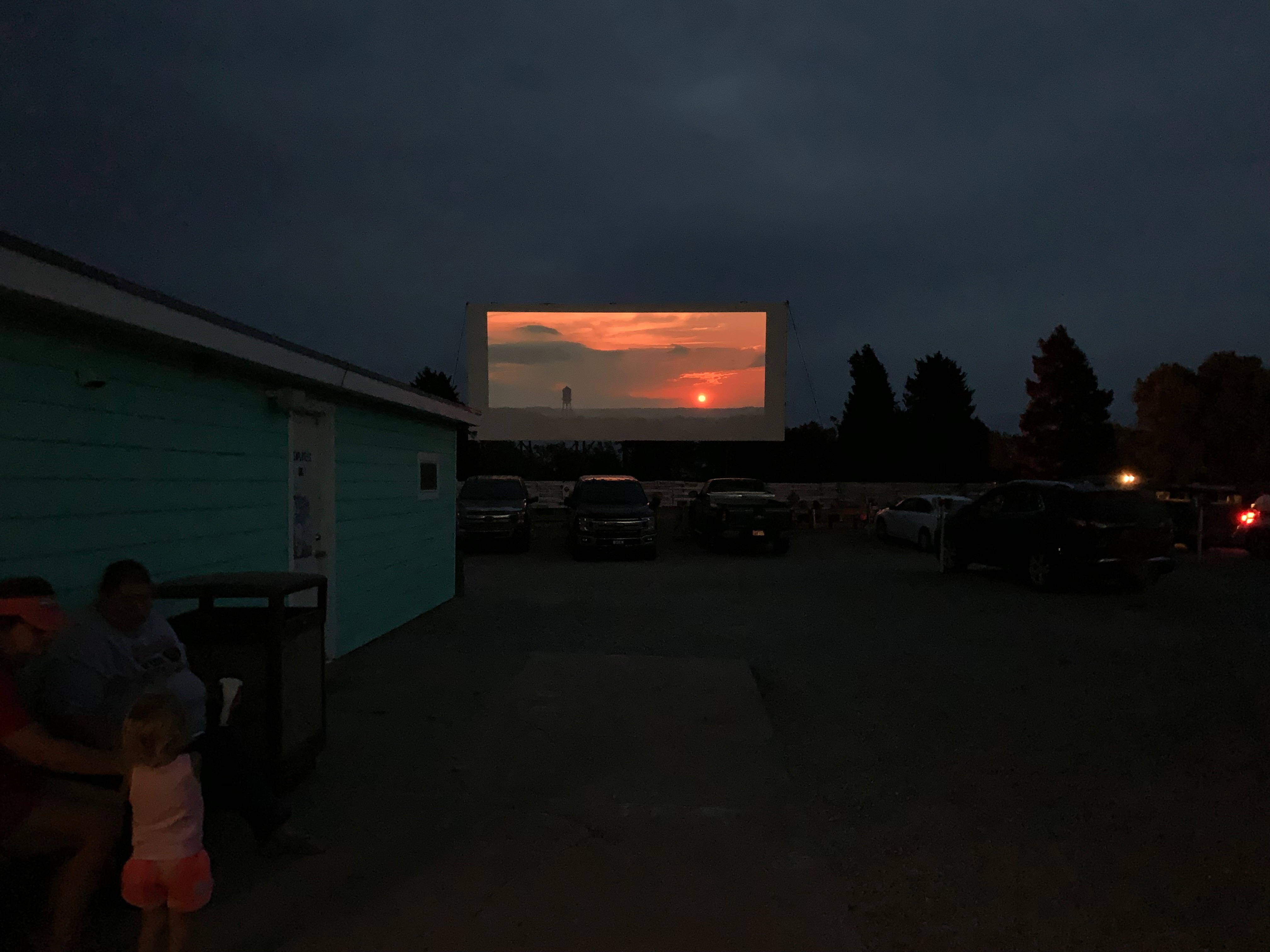
SILO was screened at small venues and in small towns across the Midwest
